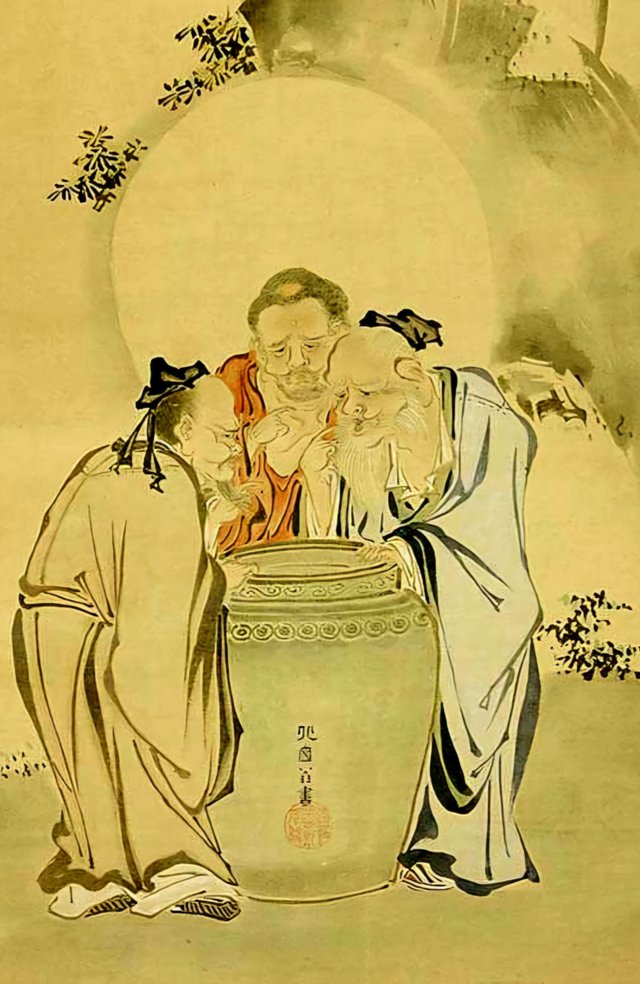The Three Vinegar Tasters (三酸圖)
The allegorical painting shows three men dipping their fingers in a vat of vinegar and tasting it. One man reacts with a sour expression, another one reacts with a bitter expression, and the other one reacts with a sweet expression.
The identity of the three men in the painting varies in China, Korea, and Japan. The most popular version though depicts the three men to be Confucius, Buddha, and Laozi.
Confucius is portrayed with a sour expression on his face as he tastes the vinegar. This represents his belief in the inherent difficulties and challenges of life. Confucius focused on the importance of moral values, social harmony, and the cultivation of virtues (ren, yi, li, zhi, xin) as the path to great peace (taiping) and harmonious society (datong). Confucianism saw life as sour, in need of rules and orders, authority and discipline to correct the degeneration of people and society.
Buddha is depicted with a bitter expression. His reaction reflects his recognition of the suffering (dukkha) and transience and impermanence of life (annica and anatta). Buddhism teaches that attachment and desire (tanha) lead to suffering, and the path to enlightenment (nirvana) and liberation from the cycle of life-death-rebirth (samsara) involves transcending these attachments and achieving inner peace. Buddhism saw life as bitter, dominated by pain and suffering due to the attachment to possessions and material desires.
Laozi is shown with a serene expression. He is often associated with sweetness in the painting, suggesting his belief in the natural flow of life with all its ups and downs, harmony with the Tao (the Way), and the simplicity of existence. Laozi's attitude and philosophy emphasizes living in accordance with nature, going with the flow (wu wei), embracing the spontaneity of life, and being grounded to humility and simplicity amidst this seemingly grand, complex world. Taoism saw life as sweet due to it being fundamentally perfect in its natural state.
Another interpretation of the painting is that, since the three men are gathered around one vat of vinegar, the "three great life teachings of the three great teachers" are one.
Relatedly, the popular Chinese proverb "Three laughs at Tiger Brook (虎溪三笑)" refers to another popular allegorical image of three men, Huiyuan the Buddhist monk, Tao Yuanming the Confucian politician, and Lu Xiujing the Taoist scholar laughing together when arriving at Huxi (Tiger Brook) of the sacred Lu Mountain. This allegorical concept represents the perspective of the inter-connectedness and ideal harmonious relationship of #Confucianism, #Taoism, and #Buddhism.
☘️
Photo: © The Trustees of the British Museum
Painting rendition by Hanabusa Itcho (1652-1724)
Tokugawa Shogunate, Edo, Japan
Original painting by Qiu Ying (1494-1552)
Ming Dynasty, Jiangsu, China
☘️
Text: JR Estallo
www.neotaosociety.com
